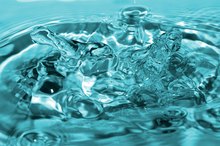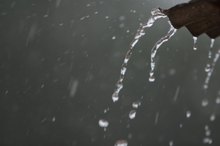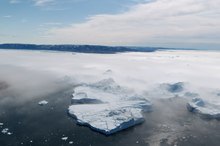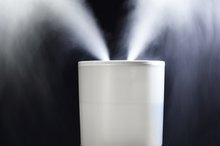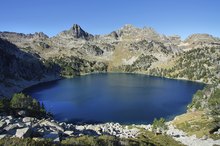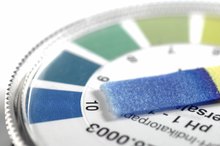Water Table Vs. Piezometric Surface
The distinction between the water table and the piezometric, also known as potentiometric, surface is the difference between the naturally occurring surface of water in a groundwater aquifer and the surface of water in a monitoring well in a confined aquifer. Both measurements are used to depict recharge and discharge rates, which necessary to describe the quantity and quality of water supplies.
Aquifer
A groundwater aquifer is the underground container of water. It can be confined or unconfined. An unconfined aquifer is surrounded on top by a highly permeable layer called the saturated zone, where a lot of rainwater seeps through the soil layer, recharging the aquifer at high rates. A confined aquifer, also known as an artesian water source, has a limited permeable layer on top, perhaps porous rock below the saturated soil zone, resulting is lowered recharge rates, but in theory cleaner, more naturally filtered water.
- A groundwater aquifer is the underground container of water.
- A confined aquifer, also known as an artesian water source, has a limited permeable layer on top, perhaps porous rock below the saturated soil zone, resulting is lowered recharge rates, but in theory cleaner, more naturally filtered water.
Recharge
What Is the pH of D.I. water?
Learn More
Recharge is the rate and volume at which rainwater seeps through saturated zones into an aquifer. When the recharge rate is greater than the discharge rate, water levels rise. Recharge rates are useful information if groundwater contamination is a problem; rates are used to determine how contaminate levels within an aquifer may be reduced through dilution. Recharge is related to seasonal fluctuations; more water recharges the aquifer in winter and spring with more precipitation.
- Recharge is the rate and volume at which rainwater seeps through saturated zones into an aquifer.
- Recharge is related to seasonal fluctuations; more water recharges the aquifer in winter and spring with more precipitation.
Discharge
Discharge reflects the amount of water leaving the aquifer. Groundwater contributes to surface water volumes and influences flows 1. Seeps, rivers, streams and lakes are usually connected to groundwater sources feeding water into them. Seasonal changes affect discharge when warmer weather increases evapotranspiration rates.
- Discharge reflects the amount of water leaving the aquifer.
- Seasonal changes affect discharge when warmer weather increases evapotranspiration rates.
Water Table
The Advantages of Rainfall
Learn More
Beneath the surface, many uneven layers of soil, rock and water interact with precipitation and surface water to change groundwater volumes. The uneven layers create underground flows that influence discharge to surface water and distribute and/or re-distribute minerals and contaminants. The water table is the surface at which water pressure is equal to atmospheric pressure. It is depicted on maps as a line across an aquifer.
- Beneath the surface, many uneven layers of soil, rock and water interact with precipitation and surface water to change groundwater volumes.
- The uneven layers create underground flows that influence discharge to surface water and distribute and/or re-distribute minerals and contaminants.
Piezometric Surface
A piezometer is a special tool that is used to take measurements within an aquifer. It is submerged within a well beneath the saturated zone, through less porous rock. Many piezometer wells are drilled within a confined aquifer at certain locations. The piezometric surface of water is the level of water within a piezometric well in a confined aquifer. It is depicted on maps as a line between the walls of a well. When several piezometric surface measurements are available, a hydrogeologist can determine recharge and discharge rates and most importantly groundwater-flow direction and rates.
- A piezometer is a special tool that is used to take measurements within an aquifer.
- Many piezometer wells are drilled within a confined aquifer at certain locations.
Piezometric Surface vs. Water Table
Piezometric surfaces can differ from the water table line. Calculations based upon piezometric surface levels in comparison to the water table levels show how groundwater volumes and qualities can change. Seasonal, contaminant or climate influences can be correlated to changes, providing important resource-management information.
Related Articles
References
Writer Bio
Diane Bacher is a certified business energy professional with more than 16 years of experience in the environmental and energy sector. She has written numerous data and regulatory compliance reports for industrial, financial, educational and information-technology clients. Bacher's publications include the New Jersey Technology Council's "Tech News."
